“Days of war are hard times and breed many griefs. They are, too, times of testing and development of character. The reward that remains, however, is the peace.”
-Chaplain Fred McDonald Homily for the Allied High Command on May 8, 1945
US Army Episcopal chaplain Frederick McDonald served in the 12th Army Group from 1944-1945. Beginning his assignment in England and then on into Paris, and into Germany, McDonald witnessed the utter devastation of war. Reverend McDonald was born in Seattle, Washington on September 20, 1908. He was passionate about travel (in particular to Europe) and about church architecture, both of which would figure prominently in his later experiences.
McDonald attended the General Theological Seminary from 1931-1934 in New York City. His first parishes were in Rhode Island and then in his native Pacific Northwest, in Washington and Oregon. When the United States entered the war, the Army only had 137 chaplains on active duty. Nearly 9,000 men of faith would answer the call to serve in the Army Chaplain Corps during the war. In September 1942, McDonald reported to Chaplain School at Harvard University.
His first assignment was as chaplain at Fort Mason, the headquarters of the San Francisco Port of Embarkation. The Fort Mason Chapel was the site of 150 weddings in its first year. In June 1943, McDonald, wanting to be closer to action, was sent on two tours visiting and ministering to US ships in the Pacific. After returning to San Francisco from his second tour in July 1944, McDonald sailed for England with 89 other military chaplains assigned to the European theater of operations.
As Chaplain of Special Troops, 12th Army Group, McDonald held services for American servicemembers and civilians in barns, in orchards, and in bombed-out sanctuaries. With the 12th Army Group headquartered at Verdun, France, McDonald became one of the chaplains tasked with servicing the 1,000 enlisted men and 5,000 officers based there. When the war ended, McDonald was tapped by General Bradley to conduct a Victory service for the General Staff and Allied High Command, which was broadcast back to the United States by NBC. McDonal spoke of the destruction, of the price of victory, and of the “multitude of sacrifices.” He preached, “Days of war are hard times and breed many griefs. They are, too, times of testing and development of character. The reward that remains, however, is the peace.”
During his time in service, McDonald like others, documented his travels and collected pieces to help him remember the places he had been and the devastation he had seen.Throughout war-torn Europe, the chaplain collected small shards of stained glass from desecrated sanctuary sites he visited from 1944 to 1945. Upon first encountering a church in England that was destroyed by a German bombing raid, McDonald was heartbroken at the destruction.
He gathered some of the fragments from the stained glass windows, which he saved in envelopes and meticulously labeled. He repeated the process at dozens of other damaged churches he encountered, creating a virtual map of his service. During one of his assignments on March 8, 1945, McDonald entered the Gothic Church of Our Lady in Trier, Germany. He wrote of seeing the fallen crucifix on the floor with a statue of the Virgin Mary looking down at it. McDonald observed, as did many soldiers at the end of World War II, the devastation around him, and the way the bits of broken glass on the ground shined in the sunlight. He believed that shards from shattered stained glass windows “might be worked into a memorial window somewhere” after the war.
Decades later, not one, but many memorial windows would begin to materialize. In 1999, under the guidance of Frederick McDonald and the leadership of artist and curator Armelle Leroux, 25 works of stained glass art were crafted by 13 artists using the small fragments collected by McDonald in World War II. Together the works form the basis of the exhibition Remembered Light: Glass Fragments from World War II, the McDonald Windows.
Each of the artists in Remembered Light incorporated the glass fragments into pieces that interpret themes of loss, devastation, and continual striving for peace. Each piece includes a transcript from McDonald’s memory of the specific location and events related to it. The artists used McDonald’s notes from World War II, his recollections after the war, and their own research to create the original artworks. The scenes memorialized in the pieces speak directly to the origin of the shards—bombings in England, France, The Netherlands, Belgium, and Germany. Most of the art pieces combine various glass techniques, such as leaded glass, glass painting, enameling, sandblasting, fusing, slumping, silkscreen, and lampworking. Other media, such as ceramic, wood, acetate, and Plexiglas were also used.
-

Trier, Germany Liebefrau Kirche by artist Peter Eichhorn. Courtesy Frederick A. McDonald Trust.
-

Remembered Light at The National WWII Museum.
-

Malmedy, Belgium Unidentified sanctuary by artist Daniel Ziegler at The National WWII Museum.
Remembered Light has traveled the country since 2007, organized by the Interfaith Center at the Presidio, San Francisco, California, where the stained glass art pieces from Remembered Light will be incorporated into and permanently displayed in the planned renovation of the historic Presidio Chapel. The exhibition includes a showing at The National WWII Museum from November 21, 2019, through December 27, 2020, in The Joe W. and Dorothy D. Brown Special Exhibit Gallery in the Louisiana Memorial Pavilion. This exhibition is an opportunity to showcase some of the ways in which memories from over 70 years ago can be shared and preserved.
For more about the artworks in Remembered Light, about Fred McDonald and the McDonald Peace Windows, see the Interfaith Center at the Presidio, who are working to restore their chapel and build a gallery for the McDonald Peace Windows honoring veterans and military chaplaincy.
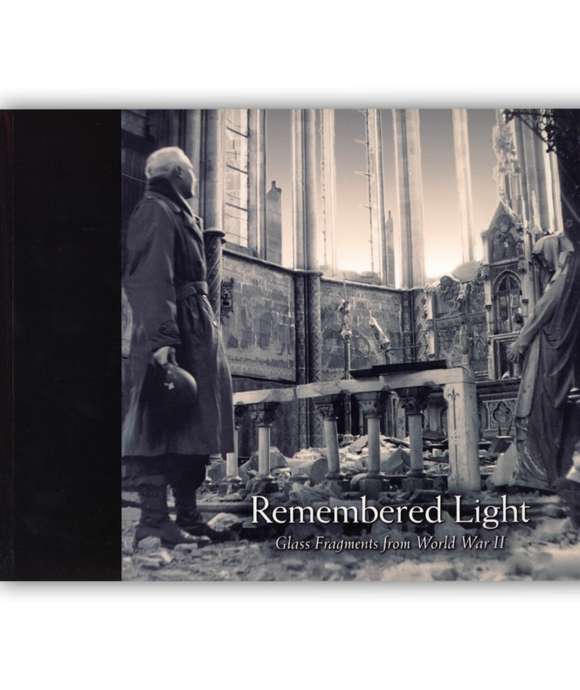
Remembered Light Exhibit Catalogue
See the collected shards of stained glass and other mementos from desecrated sanctuary sites McDonald visited from 1944 to 1945 after he first encountered a church in England destroyed by bombing and was heartbroken by the ruins.
Kim Guise
Kimberly Guise holds a BA in German and Judaic Studies from the University of Massachusetts Amherst. She also studied at the Universität Freiburg in Germany and holds a masters in Library and Information Science (MLIS) from Louisiana State University. Kim is fluent in German, reads Yiddish, and specializes in the American prisoner-of-war experience in World War II.
Cite this article:
MLA Citation:
APA Citation:
Chicago Style Citation:
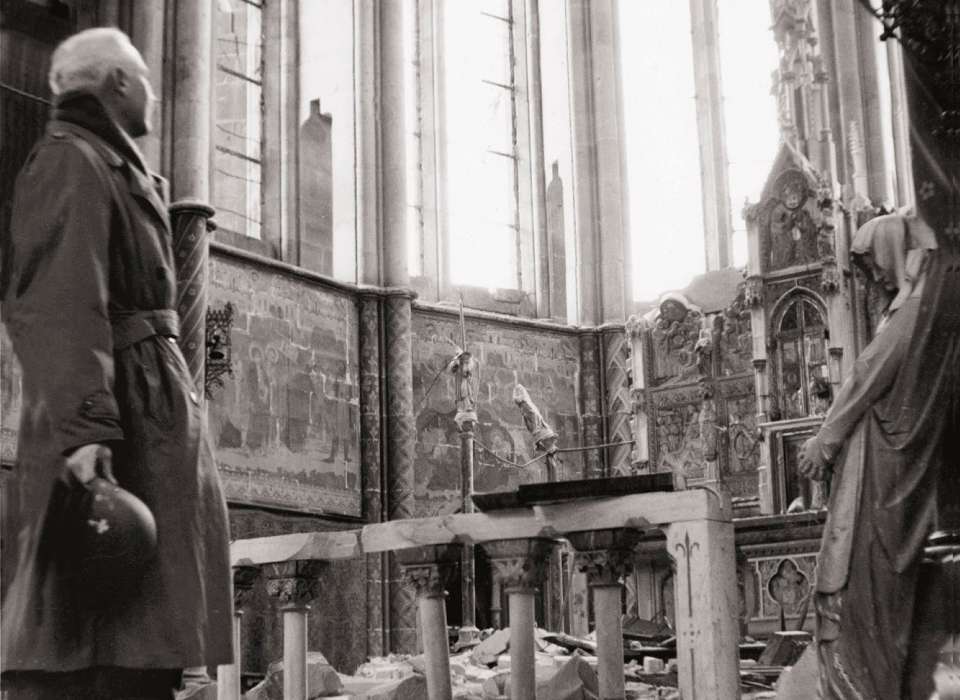
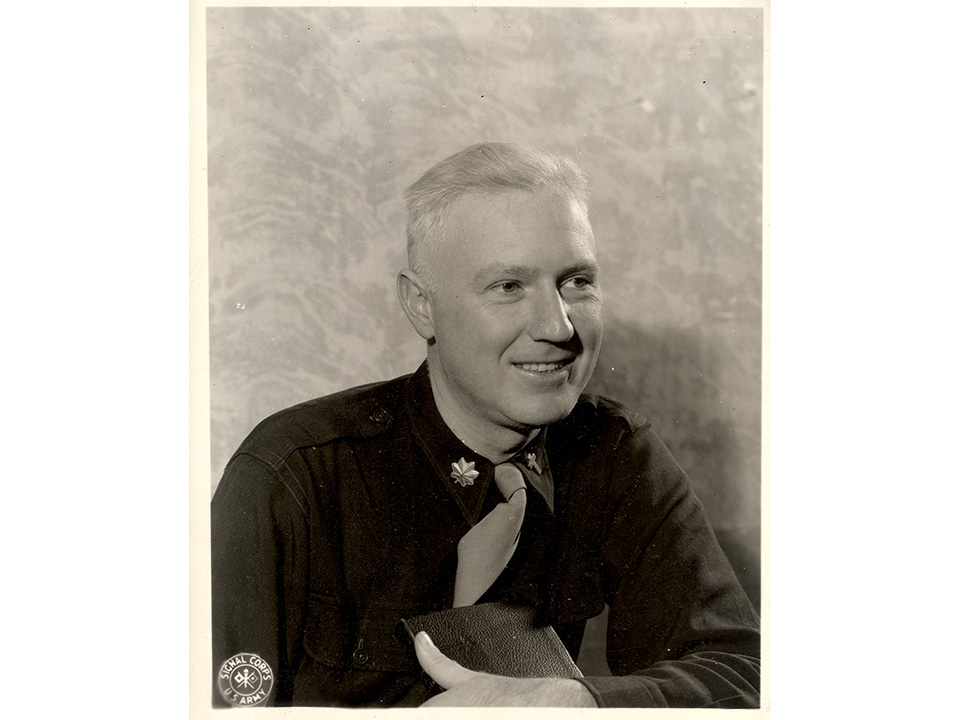
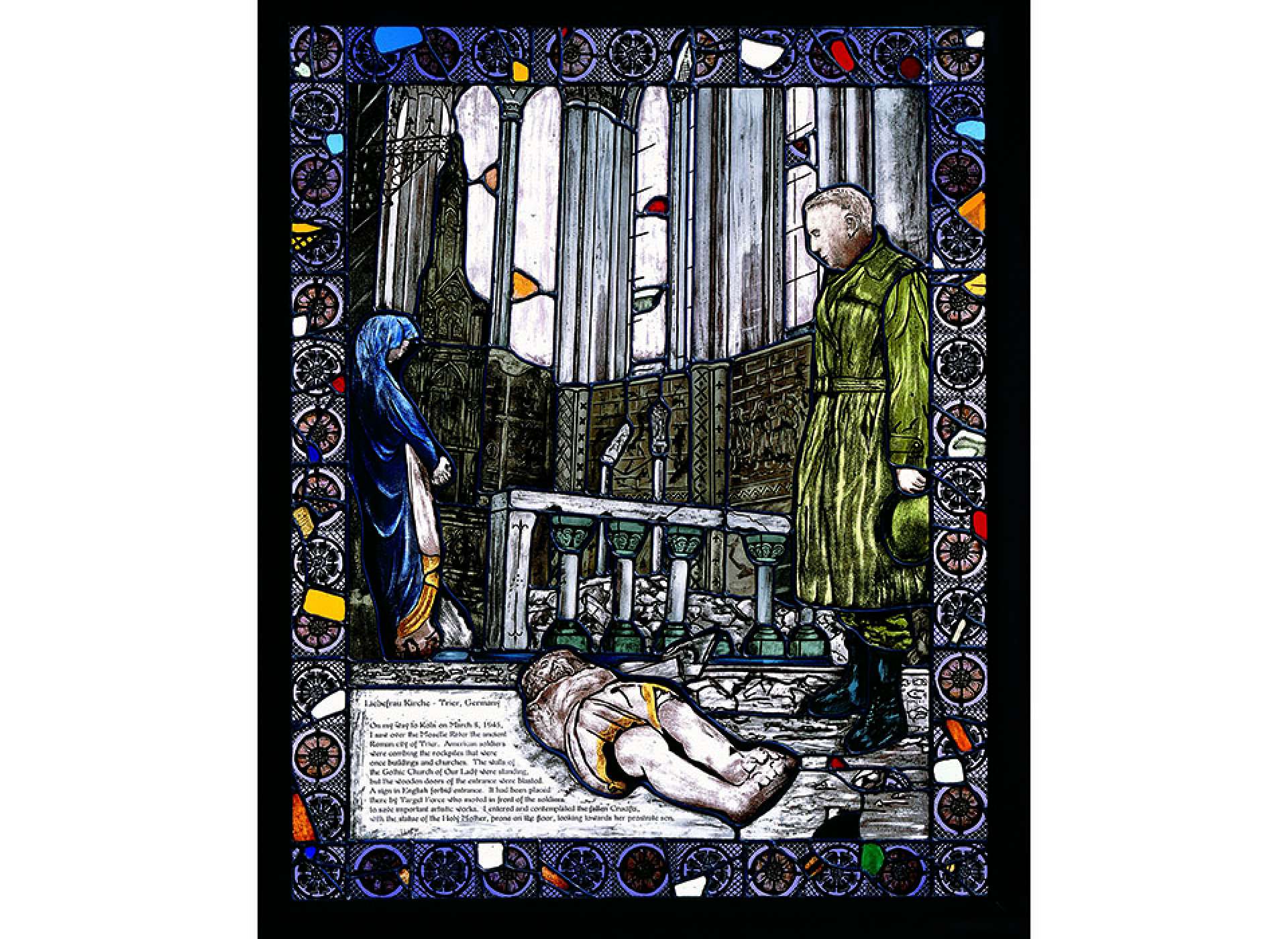
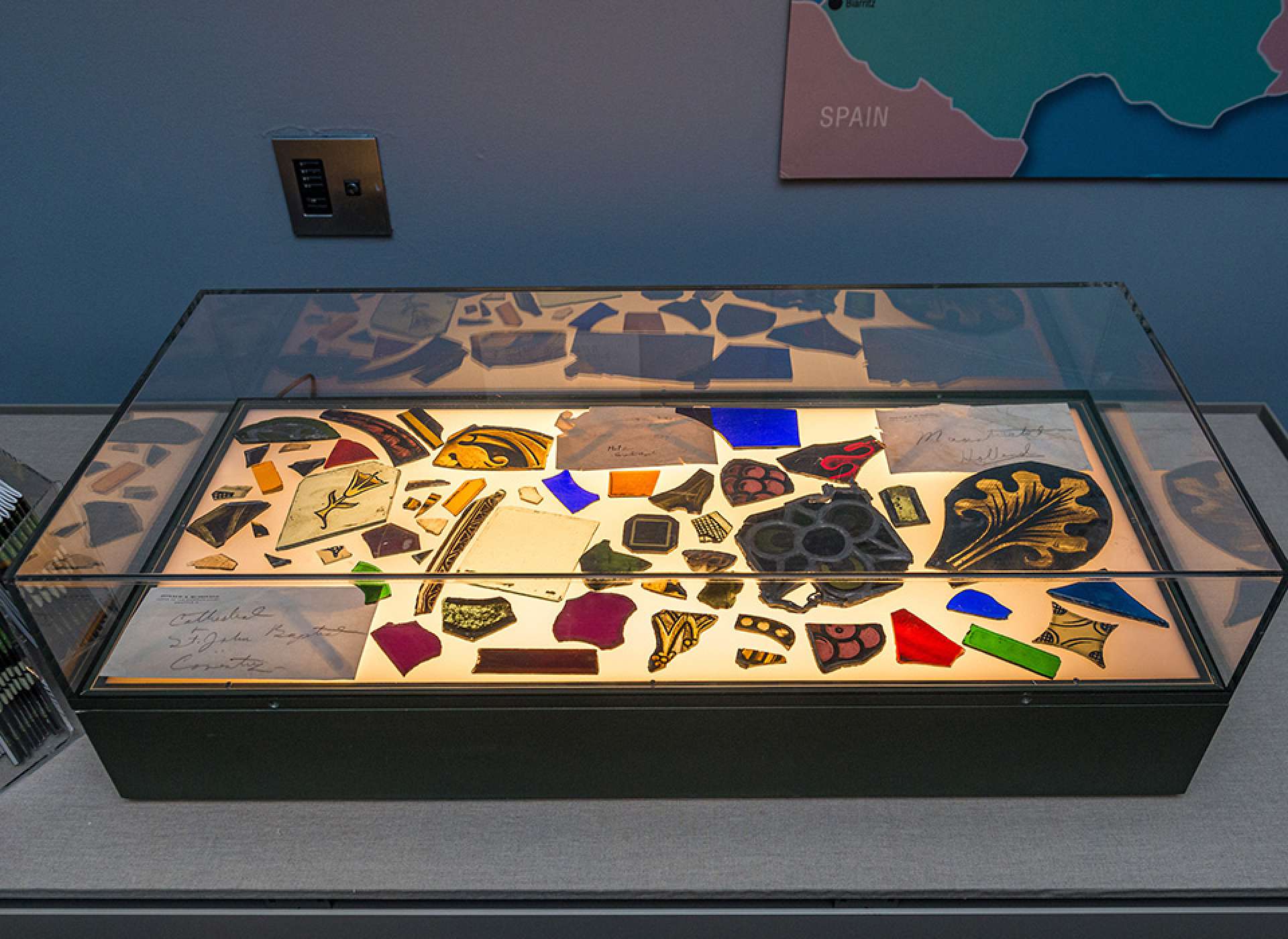
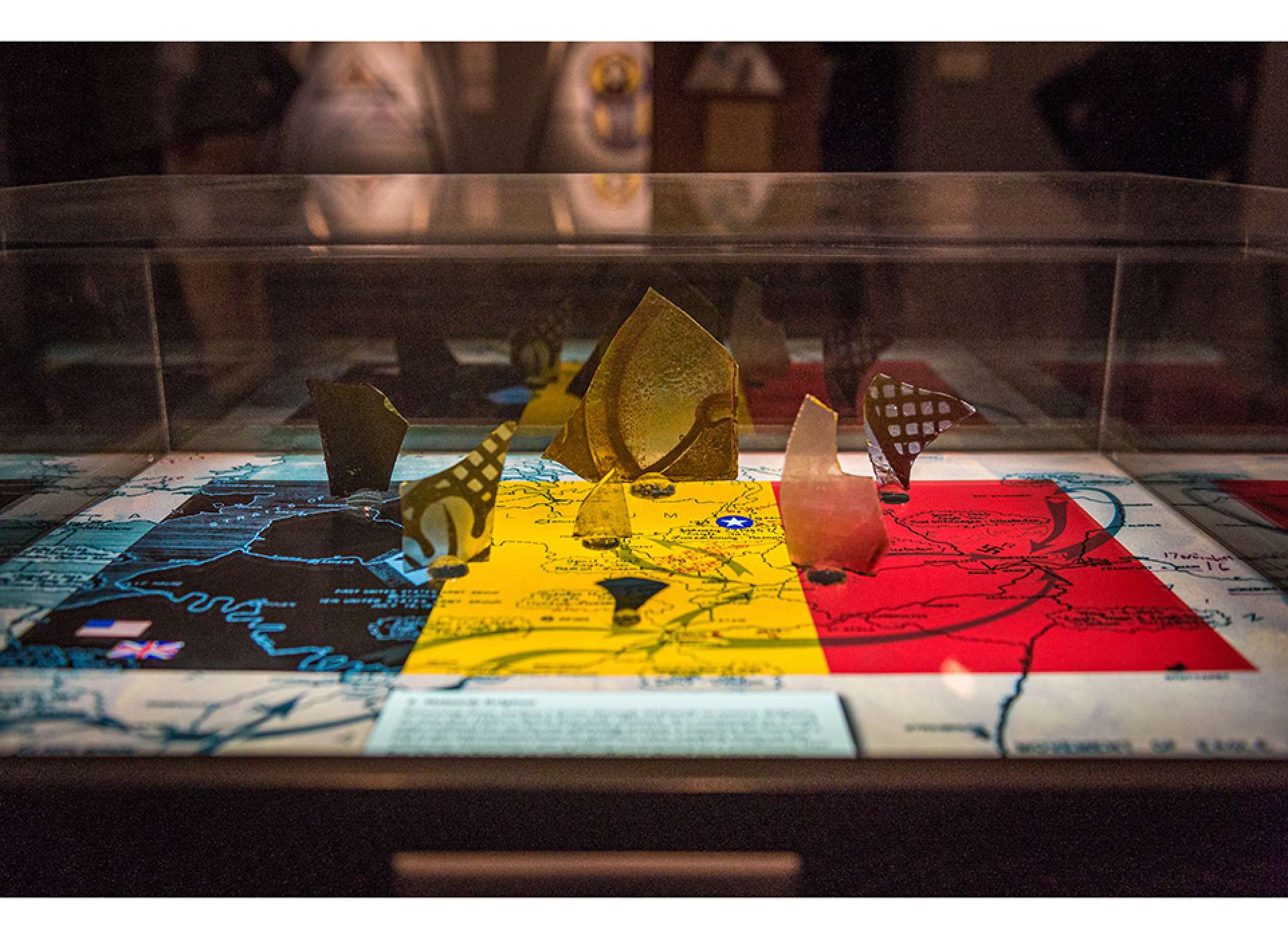

![Max Fuchs, New York City cantor, sings as Rabbi Sydney [sic] Lefkowitz, Richmond, VA, conducts the first Jewish services from Germany.](/sites/default/files/styles/max_650x650/public/2025-10/image1.jpg)






